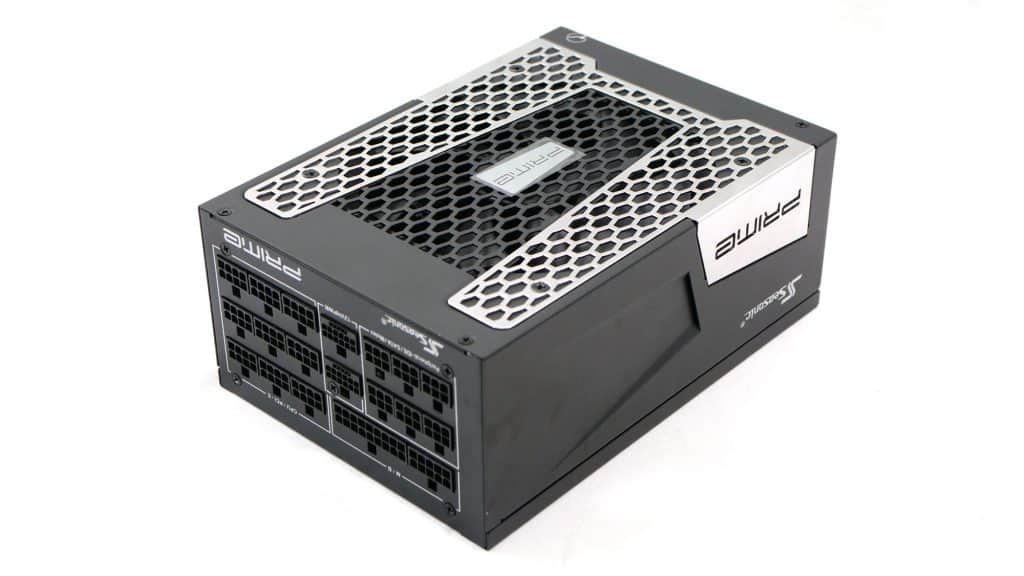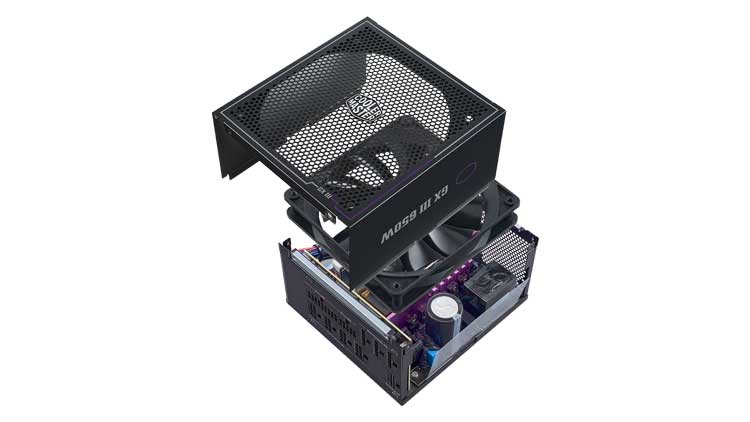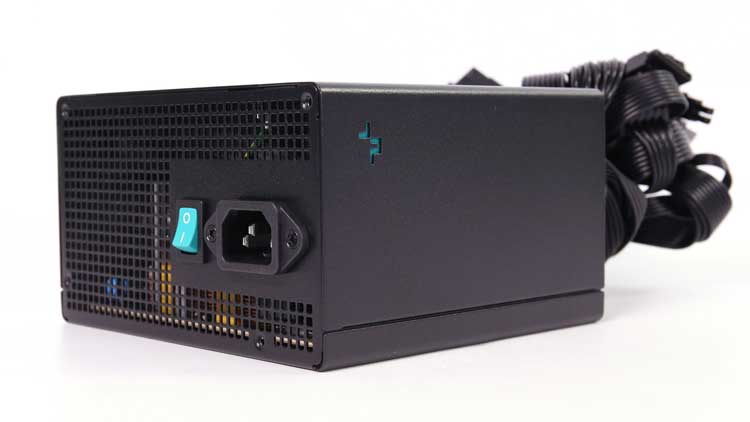Epilogue
The Seasonic TX-1600 ATX 3.0 is an excellent PSU, achieving top performance in almost all areas. With higher power factor readings, lower OCP triggering points on the minor rails, and lower inrush current at 230V, its overall performance would be even better, reaching dangerously close to the mighty Corsair AX1600i, which retains its performance crown. Nonetheless, the AX1600i is not ATX v3.0 ready, while the TX-1600 is one of the two high-capacity PSUs that meet the strict ATX v3.0 transient response requirements for units with 12VHPWR connectors. It is impressive to see a PSU handling up to 3200W transient loads without sweating, although I wonder if such loads will ever be required. According to my Powenetics v2 results, even the powerful NVIDIA RTX 4090 isn’t even close to such high transient loads, so I fail for the moment to see the reason behind the 180% and 200% transient response requirements of the newest Intel ATX spec. I cannot know, though, what the future will bring.
Besides top performance, the TX-1600 is also silent, something that is not the case for the second ATX v3.0 unit, so far at least, meeting the ATX v3.0 requirements, so if you need a super-strong ATX v3.0 PSU, the TX-1600 is a one-way road. Its price is high, but I should probably stop including “expensive” in the cons list of such products because achieving such high build quality requires costly parts. The same goes for the development circle and the testing phases before the product goes into mass production. All these add to the cost. When you pay close to 1000 dollars for a mid-level graphics card, you should not whine for a top PSU with a 500-600 dollar tag. After all, you don’t buy a new PSU as often as a graphics card or a CPU and mainboard combo.
I will update my Best ATX v3.0 PSUs article next week to include the Seasonic TX-1600. I will probably create a >1500W category for the only two units available for the moment, the TX-1600 and the Thermaltake GF3 1650. The latter is more affordable but noisy as hell because of its “low” efficiency for such a high capacity.
- Delivered full power at 47°C
- ATX v3.0 and PCIe 5.0 ready
- High build quality
- Top overall performance
- Quiet operation
- High average efficiency
- Higher than 70% efficiency with a 2% load
- Highly efficient 5VSB rail
- Low vampire power with 115V input
- Within 1% load regulation, except 3.3V
- Good ripple suppression, except 5VSB
- Top transient response at +12V and 5VSB
- Satisfactory transient response at 5V
- Long hold-up time
- Long and accurate power ok signal
- Alternative Low Power Mode (ALPM) compatible
- Fully modular
- Plenty of connectors including 2x 12VHPWR (600W)
- Enough distance (125-155mm) between peripheral connectors
- FDB fan
- Twelve-year warranty
- High OCP triggering points on the minor rails
- Low power factor
- Voltage sag during the “Off to Full Load Turn-on” transient response test
- Efficiency could be higher under light (20-80W) loads at 115V
- High inrush current at 230V
- An additional 4-pin Molex would be ideal
- Huge dimensions





Perhaps it would be useful to include a dummy result on each chart representing the next Cybenetics efficiency rating up from what Cybenetics rate the reviewed PSU at (and also the minimum spec for the actual rating of the PSU).
For example:
Average Efficiency
115V AC Input (Higher is better)
Silverstone DA1650-G: 89.27%
Corsair HX1500i: 89.52%
Thermaltake Toughpower GF3 1650W: 89.76%
> [Cybenetics Titanium PSU min. spec.]: 91%
be quiet! Dark Power Pro 12 1500W: 91.04%
Thermaltake Toughpower TF1 1550W: 91.05%
EVGA SuperNOVA 1600 T2: 91.35%
ASUS RoG Thor 1600W: 91.73%
XPG Fusion 1600W: 91.97%
Corsair AX1600i: 92.22%
Seasonic Prime TX-1600 (ATX 3.0): 92.27%
Wentai Aidan – T616: 92.71%
> [Hypothetical Cybenetics Diamond PSU]: => 93%
This is a good idea!!
I find it funny that every time it appears that analog PSU tech is dead Seasonic says “hold my beer.” I don’t remember which PSU review it was for on Tomshardware, but you said that to hit ATX 3.0 specs you figured Seasonic would need to go digital. They now have two ATX 3.0 PSUs that are still analog and are some of the best in their class.
They did pretty well yes. Seasonic’s engineers don’t stop to push the analog technology high. Basically I was saying digital not for ATX v3.0, but for totem-pole and efficiency because to achieve even higher than Titanium, you definitely need totem-pole and by that time only through digital you could control such a PFC converter.
Great review. Any information on when this will be available in Europe or US? Can’t seem find it on Seasonics site either.
No ideal when they will bring it to the EU, sorry. I guess after Computex.
Excuse my ignorance but i can’t understand one point. How can transient response reach %200 load, when OPP or OCP set to %130?
It is for a very short period, passing under OPP’s and OCP’s radar.
Hello, this might be a dumb question, but this PSU isn’t available as of now (14th June 2023), is it? I looked all over Seasonic’s website and all I can find is a ATX 2.5 TX-1600 PSU, which is not ATX 3.0 and therefore PCI Gen 5 ready.
Hi! Nope, it is not out yet. Seasonic told me after Computex would release it to the market.
There are reddit rumors that some guy contacted them and they informed him about an ATX 3.1 version coming sooner or later so maybe we will never see the ATX 3.0 en masse in the EU.
I found it in the US and ordered from Newegg today!
No I didn’t. I accidentally ordered the Platinum. Newegg only has the 1300 Titanium.
Now I for real found this available in the US on Amazon.
Saw some conflicting information on the net, so I wanted to ask the expert. Are the 12vhpwr connectors on this PSU capable of outputting the full 600 watts? I know the 12vhpwr cable itself supports 600 watts (melting issues aside), but I saw some forums stating the PSU only outputs 450 from the connectors. For context, I have Gigabyte 4090 Gaming OC which has a power limit of 600 watts, so I want to make sure I pick a PSU that can feed it if I decide to tinker with overclocking. Thanks.
Yes they are. Also please note that according to my measurements, 450W vs 600W on an RTX 4090 doesn’t provide anything significant on performance perspective.
Thanks, super useful stuff. Where did the XPG Fusion 1600 results come from? Have you tested that one as well?
From the Cybenetics database 🙂